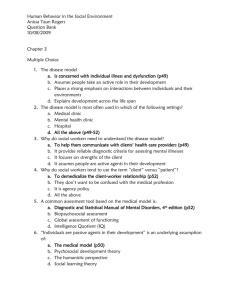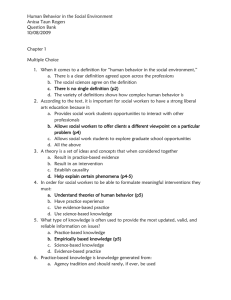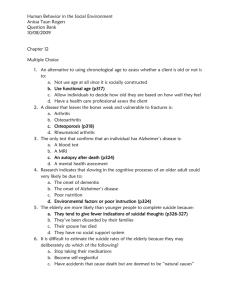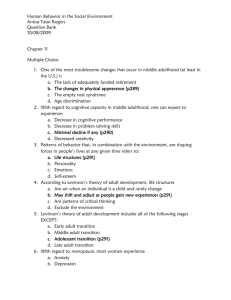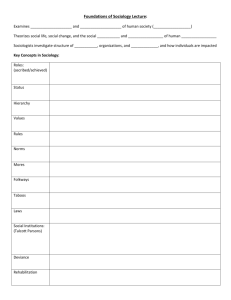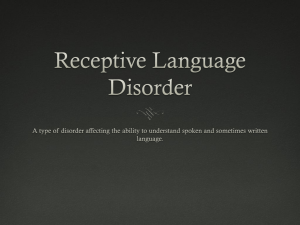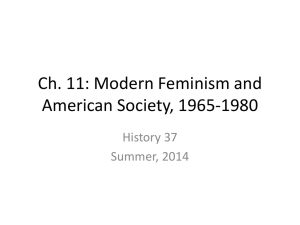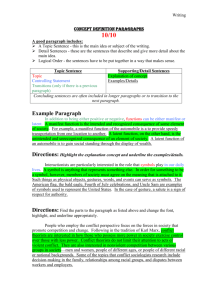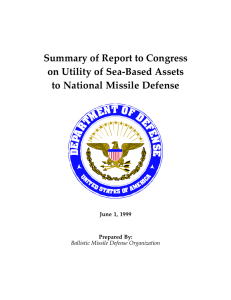Human Behavior in the Social Environment Anissa Taun Rogers
advertisement
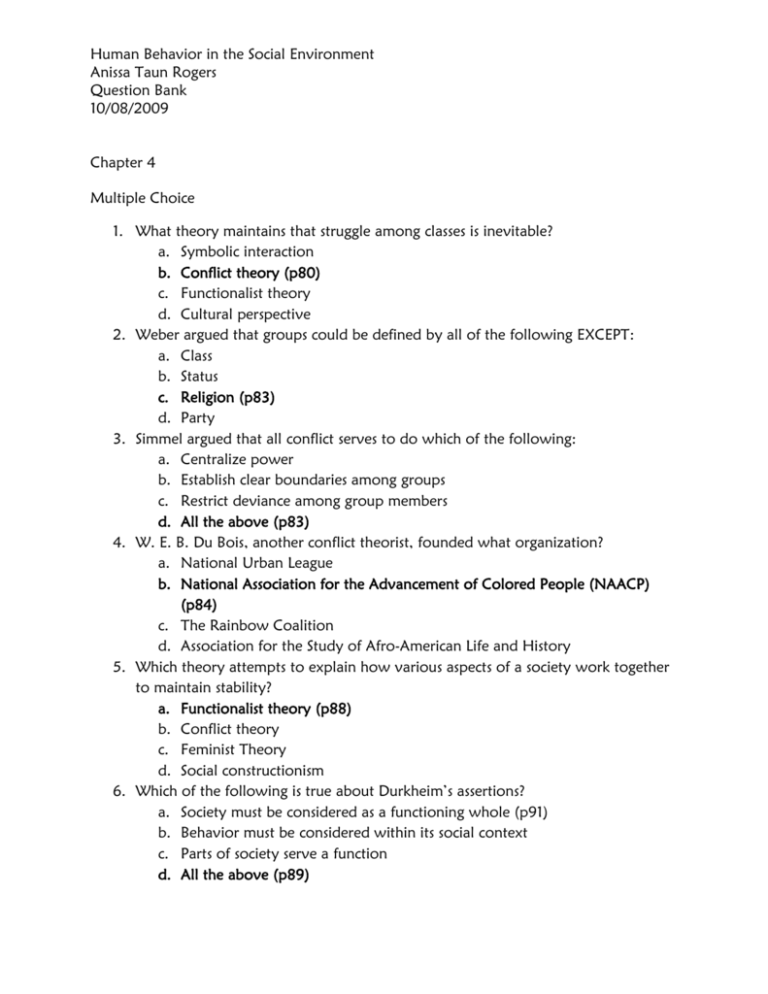
Human Behavior in the Social Environment Anissa Taun Rogers Question Bank 10/08/2009 Chapter 4 Multiple Choice 1. What theory maintains that struggle among classes is inevitable? a. Symbolic interaction b. Conflict theory (p80) c. Functionalist theory d. Cultural perspective 2. Weber argued that groups could be defined by all of the following EXCEPT: a. Class b. Status c. Religion (p83) d. Party 3. Simmel argued that all conflict serves to do which of the following: a. Centralize power b. Establish clear boundaries among groups c. Restrict deviance among group members d. All the above (p83) 4. W. E. B. Du Bois, another conflict theorist, founded what organization? a. National Urban League b. National Association for the Advancement of Colored People (NAACP) (p84) c. The Rainbow Coalition d. Association for the Study of Afro-American Life and History 5. Which theory attempts to explain how various aspects of a society work together to maintain stability? a. Functionalist theory (p88) b. Conflict theory c. Feminist Theory d. Social constructionism 6. Which of the following is true about Durkheim’s assertions? a. Society must be considered as a functioning whole (p91) b. Behavior must be considered within its social context c. Parts of society serve a function d. All the above (p89) Human Behavior in the Social Environment Anissa Taun Rogers Question Bank 10/08/2009 7. “We all attach meaning to our communications with others within the context in which the interaction takes place.” This describes: a. Symbolic interaction theory (p93) b. Functionalist theory c. Anomie d. Manifest functions 8. Those parts of society that do not contribute to the well-being of society are: a. Manifest functions b. Latent functions c. Dysfunctions (p89) d. Symbols 9. Which theory asserts that we construct our reality based on our experiences? a. Deconstruction b. Social Constructionism (p93) c. Functionalist theory d. None of the above 10. The branch of feminist theory that first supported the idea of equal rights and equal treatment for women is: a. Socialist feminism b. Radical feminism c. Liberal feminism (p98) d. Symbolic feminism 11. Which strength of feminism has also been criticized as perhaps perpetuating inequality? a. Its focus on equality b. It questions dominant structures c. It has validated alternative approaches to generate knowledge d. Its focus on women (p100-101) 12. Those parts of society whose purposes are readily discernable are: a. Latent functions b. Manifest functions (p89) c. Dysfunctions d. Anomie 13. Institutions that society uses to pass on norms, values, and beliefs are: a. Functions b. Dysfunctions Human Behavior in the Social Environment Anissa Taun Rogers Question Bank 10/08/2009 c. Latent functions (p89) d. Manifest functions 14. Culture is made up of which of the following? a. Norms, values, and customs b. Symbols, thoughts, and traditions c. Politics, religions, and philosophies d. All the above (p101) 15. The idea that different cultures should be treated equally is a tenet of: a. Cultural relativism (p104) b. Cultural pluralism c. Multiculturalism d. Both a and c (p103-104) 16. Which term expresses how individuals associate themselves with a group through values, traditions, customs, etc.? a. Culture b. Cultural relativism c. Ethnicity (p103) d. Multiculturalism 17. Which word is defined as “one’s dominant ideas about what is correct and how things should be”? a. Ideology (p103) b. Dominant reality c. Ethnocentrism d. Dysfunction 18. Which of the following implies recognizing and accommodating a variety of cultures? a. Multiculturalism b. Cultural relativism c. Ethnic identity d. Cultural pluralism (p104) Short Answer 19. How would you apply conflict theory to the current health care debate? (p86-87) 20. Describe the connection between conflict theory and social work. (p87-88) 21. Describe the relationships among manifest functions, latent functions, and dysfunctions. (p89) Human Behavior in the Social Environment Anissa Taun Rogers Question Bank 10/08/2009 22. Explain deconstruction and how social workers might use it. (p93-94) 23. Describe why it is important for social workers to understand different cultural perspectives prior to working with clients. (p101-104) 24. Discuss strengths and weaknesses of symbolic interaction theory. (p96-97) 25. With regards to the cultural perspective, social workers often focus on which aspect and why? (p104) 26. Discuss how social workers know if they are providing culturally competent services. (p106-107)
